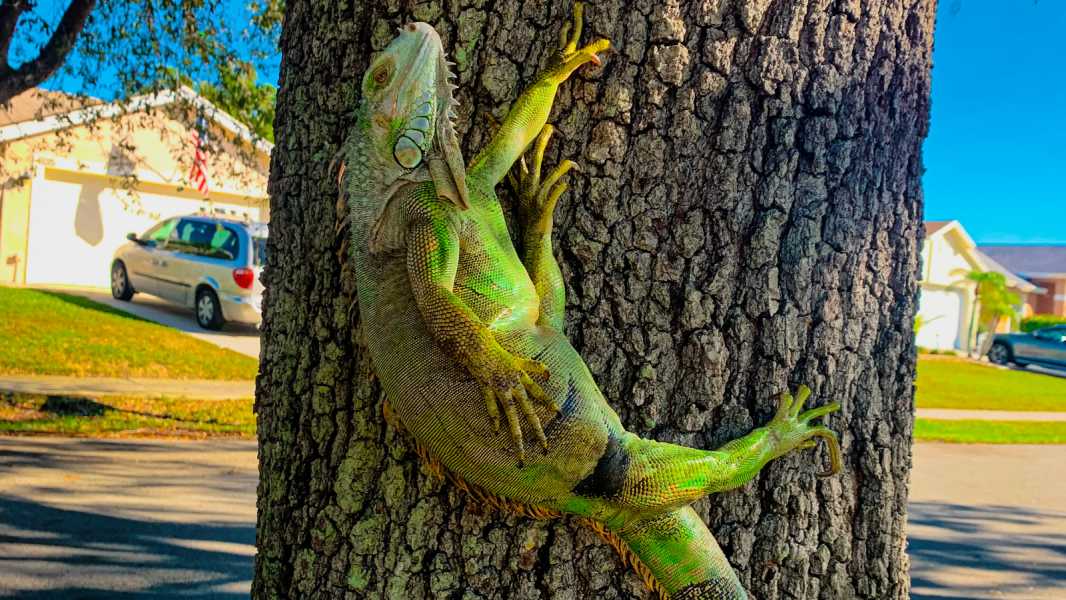
Iguanas falling from trees on cold days have become a common sight in Florida. (Photo credit: myuniverse/Getty Images)
Iguanas falling out of trees on cold days have become such a common sight in Florida that it has even become part of the weather forecast. But what causes these reptiles to react to the cold in this way?
Being cold-blooded, green iguanas (Iguana iguana) can have trouble maintaining their body temperature in cold temperatures, which puts them into a state similar to torpor. It’s a form of paralysis that can cause them to lose muscle control — which is why they fall from their branches. The paralysis typically occurs when temperatures drop below 40 degrees Fahrenheit, said Joe Wasilewski, a conservation biologist at the University of Florida. Cold temperatures also negatively affect other invasive reptiles in Florida, such as pythons and crocodiles, which often can’t survive in such conditions.
Non-native species
Green iguanas' native range extends from southern Mexico to central Brazil and Bolivia, so their optimal body temperature is between 85 and 95 degrees Fahrenheit (29 and 35 degrees Celsius), Wasilewski told Live Science. When temperatures drop below 50 F (10 C), the iguanas' metabolism slows, and they begin to drop from trees once temperatures drop below 40 degrees.
“Their metabolism is adapted to life in the tropics,” Wasilewski added. “They've been placed in habitats like southern Florida… where there are cold snaps once or twice a year.”
Expanding our range
The phenomenon has become more noticeable in recent years due to the rapid increase in iguanas. The reptiles were introduced to Florida in the 1960s and have seen a significant increase in population since the 1990s, partly due to the lack of natural predators.
The iguana-falling phenomenon is all too familiar in South Florida, as green iguanas are on the rise and because Florida is likely the northernmost point of their invasive spread, Wasilewski said, it’s one of the few places where iguanas generally thrive but sometimes face cold temperatures. However, that could change given global warming.
“I'm getting more reports of [iguanas] starting to show up in counties north of their northern boundary,” Wasilewski said. “As temperatures warm up, they'll start to spread to more northern counties; however, those counties will have more cold snaps than south Florida, and I doubt they'll be able to survive.”
Iguanas that become paralyzed usually wake up when temperatures rise, but falling iguanas can pose a hazard, injuring people or damaging cars. The National Weather Service has issued warnings about falling iguanas, urging people to be aware of their surroundings — and to avoid interfering with a cold-stunned iguana if they encounter one.
“FWC Non-Native Fish and Wildlife Program staff remind the public that if they encounter a frozen, cold-stunned iguana, they should not bring it into their home,” Lisa Thompson, a spokesperson for the Florida Fish and Wildlife Conservation Commission, told Live Science in an email. “Iguanas are wild animals, and once they are alert and warm, they may begin to exhibit defensive behavior.”
Wasilewski said he was once called to collect frozen iguanas. While the weather was warm, he transported them in a box, and later opened the box to find it full of extremely active, jumping iguanas.
“If they're not disturbed… they'll probably warm up and go back up the tree,” Wasilewski said.
Sourse: www.livescience.com





